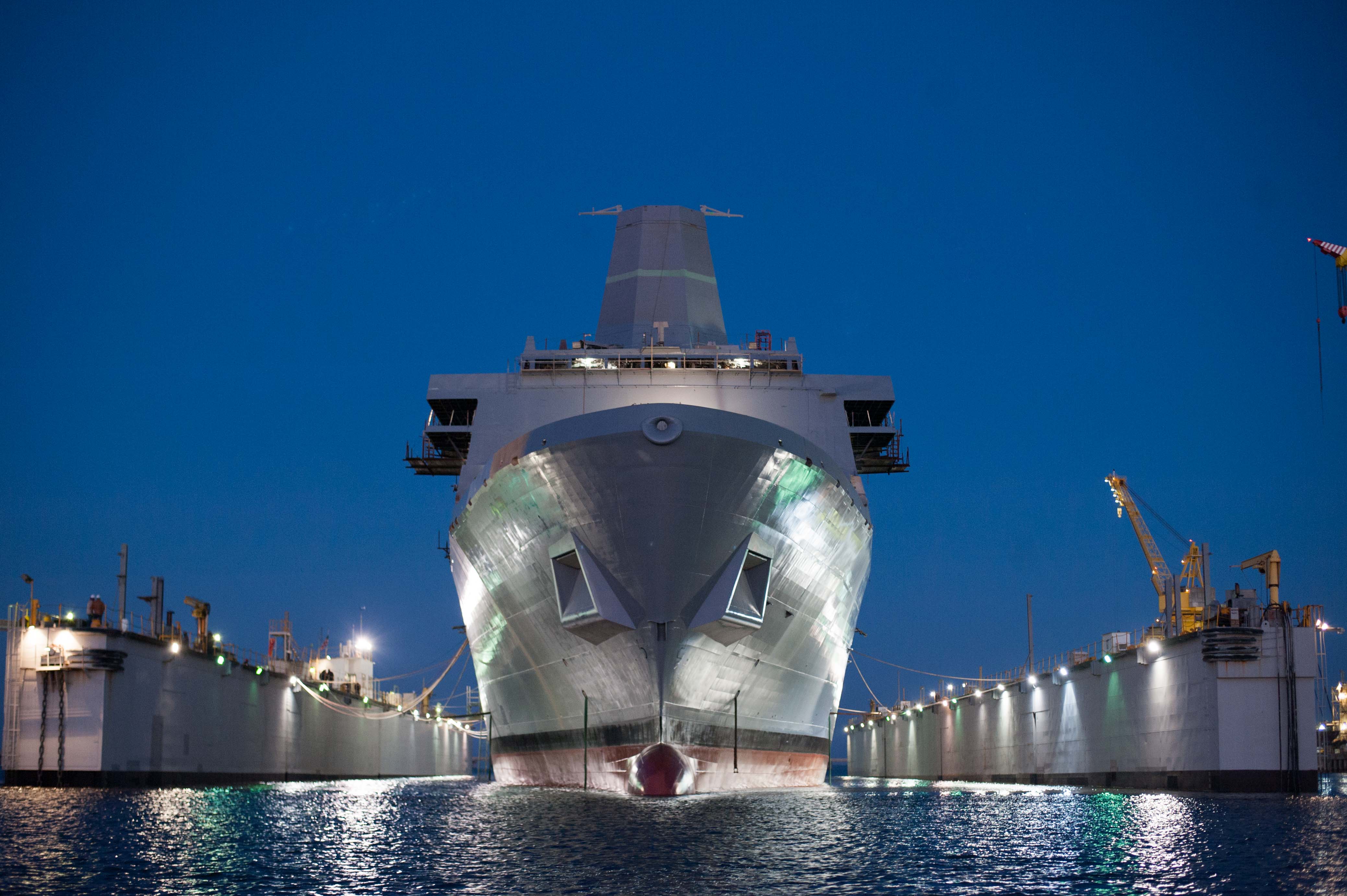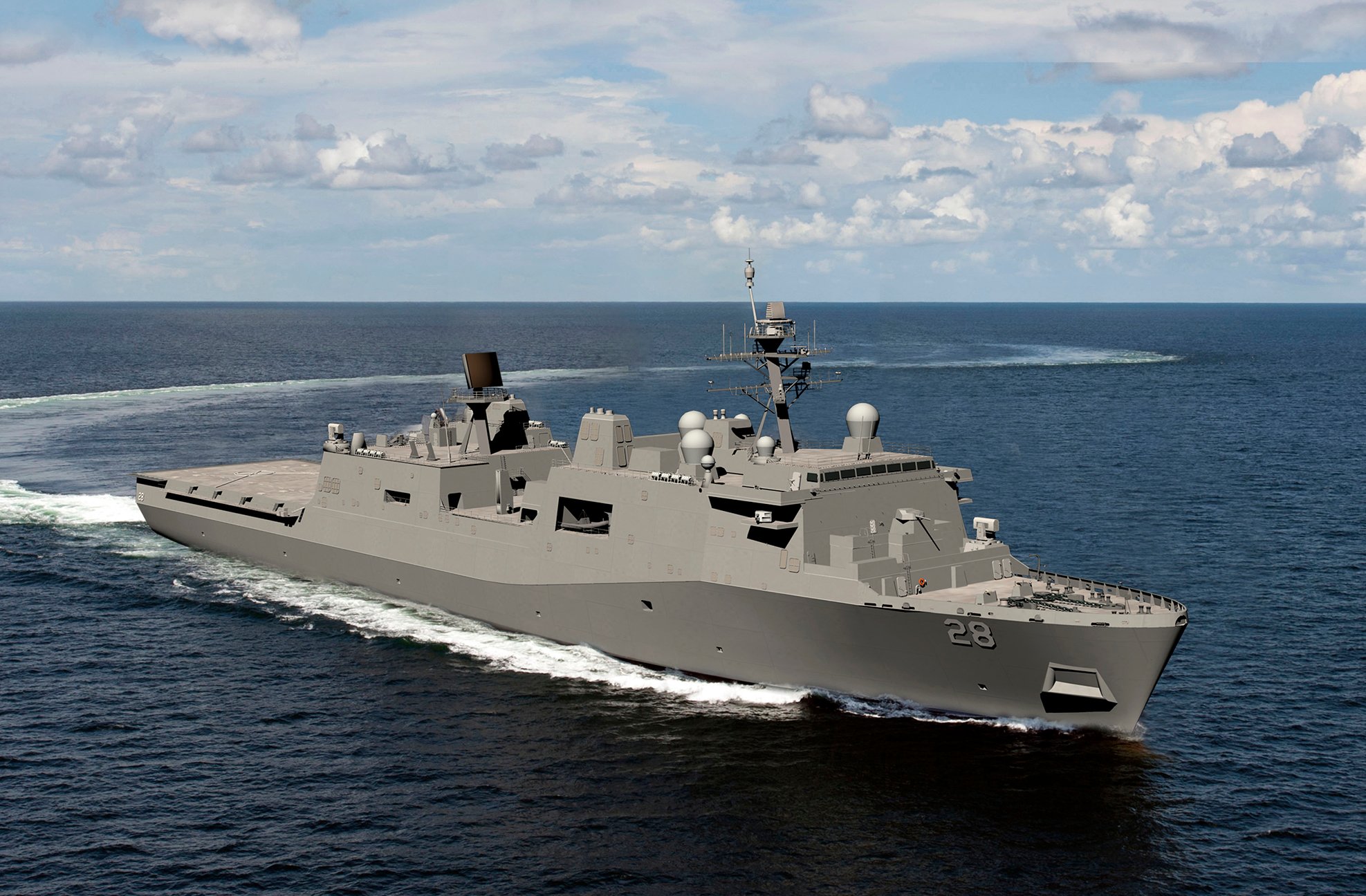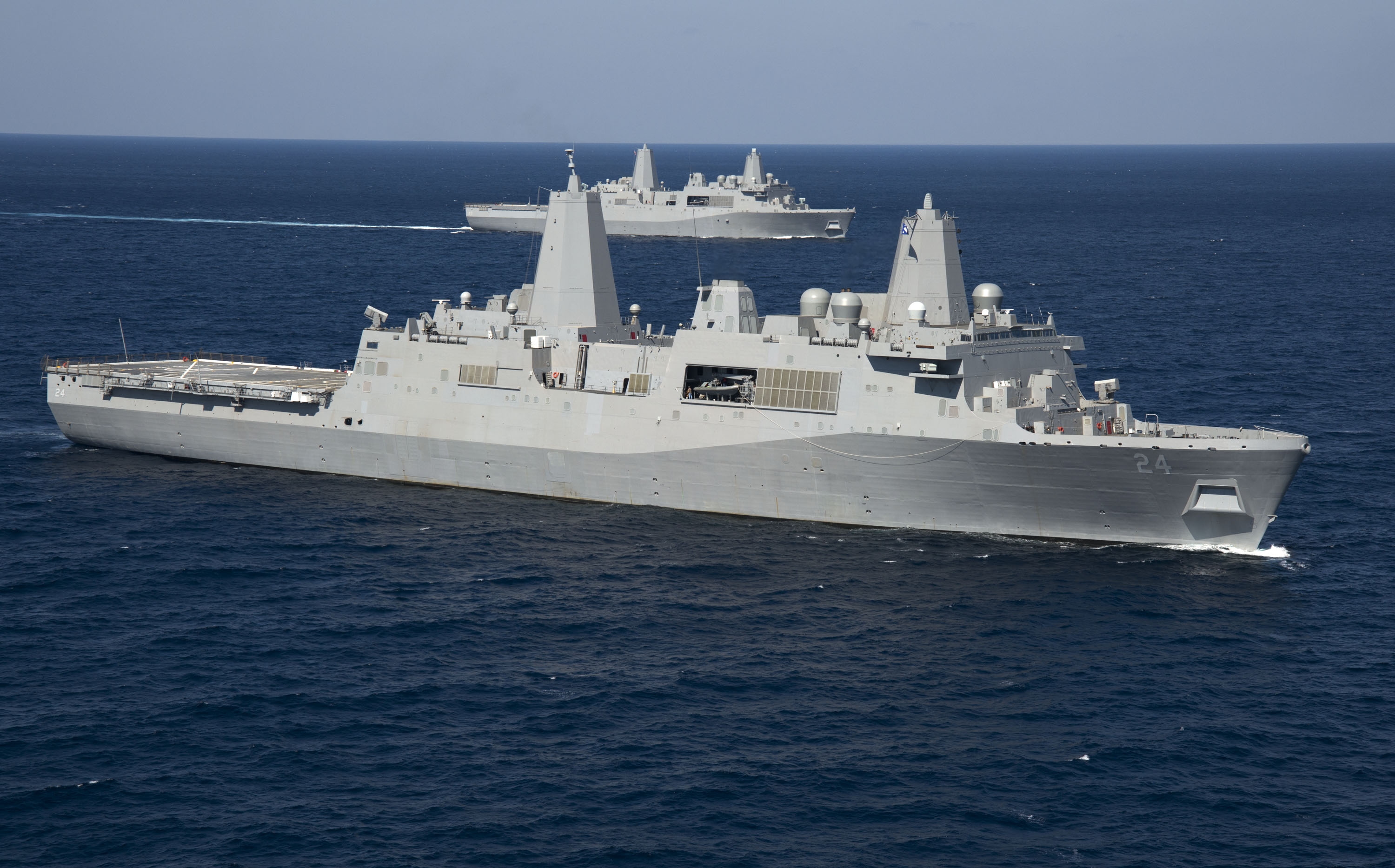
ARLINGTON, Va. – The Navy wants the next amphibious ship it buys to be the first of the next-generation LX(R) amphibs rather than another “bridge ship” to the new class, two service officials said, after Congress appears to be leaving the choice to the Navy.
The Navy’s San Antonio-class amphibious transport docks (LPD-17) had been set to end at 11 ships, but once the Navy identified the LPD hull form as the basis of its next amphib class, the LX(R) dock landing ship replacement, Congress added funding for an LPD-28 to serve as a bridge from one class to the next, to keep the production line hot until the Navy was ready to move out on LX(R). With the production line running ahead of anticipation, LPD-29 was added in Fiscal Year 2017 as another “bridge ship.”
Now, in the National Defense Authorization Act for Fiscal Year 2018, the House and Senate armed services committees gave the Navy a choice, providing money for either an LPD-30 or the first-in-class LX(R).
The Navy’s director of expeditionary warfare (OPNAV N95), Marine Corps Maj. Gen. David Coffman, said this week that LPD-29 “puts the bow on it, we’re done, we’re going to have a class of 13.”
Coffman told USNI News after giving a speech on Jan. 9 that “what my position is, N95’s position is, is not to go back to LPD.”

The Navy made the decision to use Fort Lauderdale (LPD-28) and the unnamed LPD-29 as transition ships to the LX(R) design, reverting back to a stick mast instead of the composite enclosed mast, moving from hydraulically driven systems to electrically driven ones, and more. That, combined with smaller changes made along the way as the class was built out, means “there’s not an LPD-17 (class design); there’s 13 ships, they’re all quite different, and the last few you could argue are closer to LX(R).”
Coffman noted that Congress has still not passed an FY 2018 appropriations bill, so the money still hasn’t arrived, but assuming the appropriators follow what’s in the NDAA when it comes to an FY 2018 amphib, Coffman made clear he didn’t want to continue the LPD class and wanted to begin the new class of amphibs.
“[LX(R)] is the ship for the future. … We don’t want to build San Antonio, I can tell you that. We’ve moved on,” he said.
LPD program manager Capt. Brian Metcalf said at a briefing at the SNA symposium that he’s confident in the LX(R) design and nothing but acquisition actions stand in the way of him using the FY 2018 money to buy an LX(R) instead of an LPD.
“In order to do LXR … there’s a few Navy gates that I would have to go through,” he said.
“The only thing that would stand in my way is the permission slips from the Pentagon to go and get under contract – I would have to release a [request for proposals], gather proposals, do a negotiation – it’s unlikely that that’s going to happen in the next six to nine months,”
Metcalf said his office just reached a handshake agreement with Ingalls Shipbuilding over the holidays for the LPD-29 contract and hoped to sign all the paperwork by the first week in February. After receiving the funding to buy that ship in March 2017, he called it a “sporty” pace for putting a ship on contract.
Even on that timeline, the Navy wouldn’t actually be able to put the first LX(R) on contract before the end of FY 2018 unless some other creative contracting actions were used, but Metcalf made clear that, as far as taking the leap into the new class of ship now, “nothing really stands in my way from being able to execute, nothing stands in the shipbuilder’s way from getting started.”
“We’re done with contract design. I believe I’m 100 ready for a detail design contract,” he said.
Metcalf said the decision to use LPDs 28 and 29 as transition ships to the LX(R) design has proven to be a good decision.

“What we were able to do was take advantage of these two congressionally added ships and take all of the planning products and new innovations and technologies and capabilities that were planned to happen at a five- or six- or seven-year gap and accelerate them to install them on the two what we’re calling transition ships,” he explained.
“So LPD-28 has about a hundred changes from the baseline of LPD-27. Some of them you can see, some of them you can’t,” he said, such as changes to promote fuel efficiency.
He noted that LPD-29 will make another change closer to the LX(R) design, being the first ship in all the Navy to use the Enterprise Air Surveillance Radar (EASR) that will also go on amphibious assault ships and aircraft carriers. Metcalf said the radar won’t deliver until after the ship delivers to the Navy in 2023, so Ingalls will build in all the cabling and back-end support during the shipbuilding process and will install the radar itself later on.
“We’re very excited about getting started with EASR,” the program manager said.
“It’s the next-generation for 3D search radar, it’s connecting my ships with LHAs and the aircraft carrier so it’s fantastic.”
Coffman made clear that the fleet needed this move from the Whidbey Island-class dock landing ships (LSD-41/49) to the LX(R), with all the next-generation capabilities like EASR and the LPD-like command and control environment it will bring.
He said in his speech that the LSDs “were not designed, built and put together for independent ops for a future operating environment. … We are almost desperate – almost desperate, at least mindful – we gotta get moving, and we need to start one-for-one to get these (LSDs) off the books and get those independent deployable LPDs” into the fleet through the LX(R) acquisition program.





